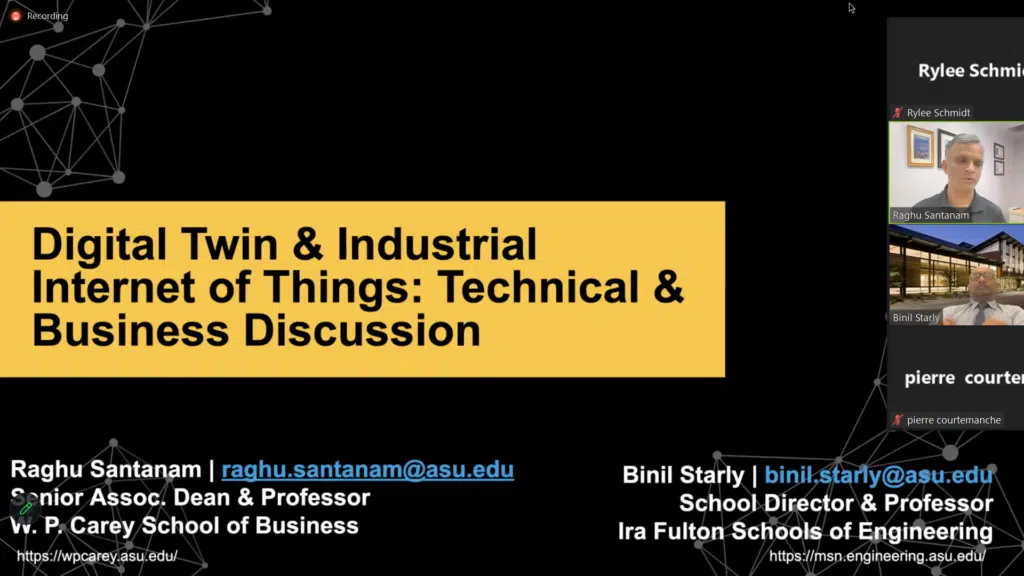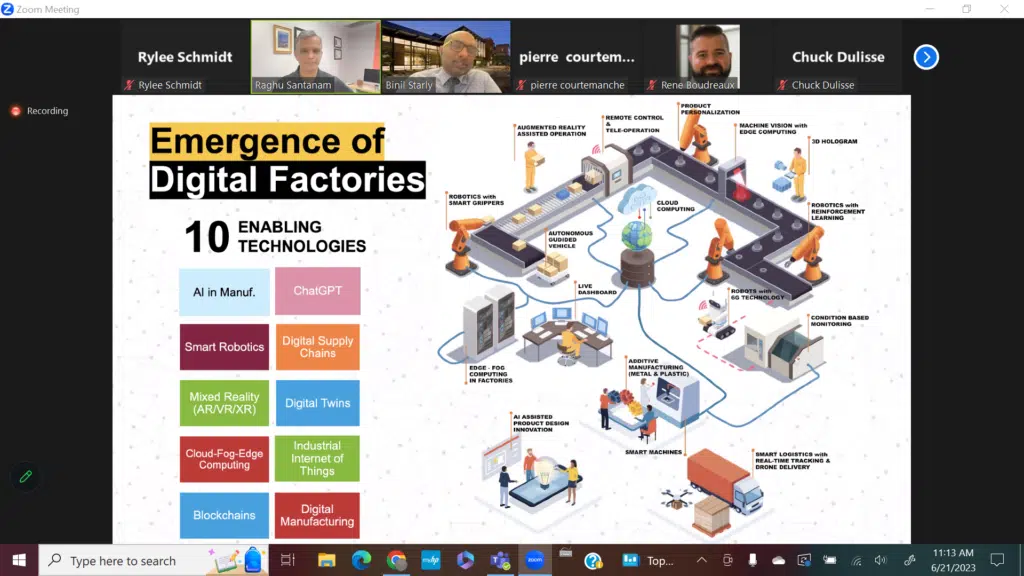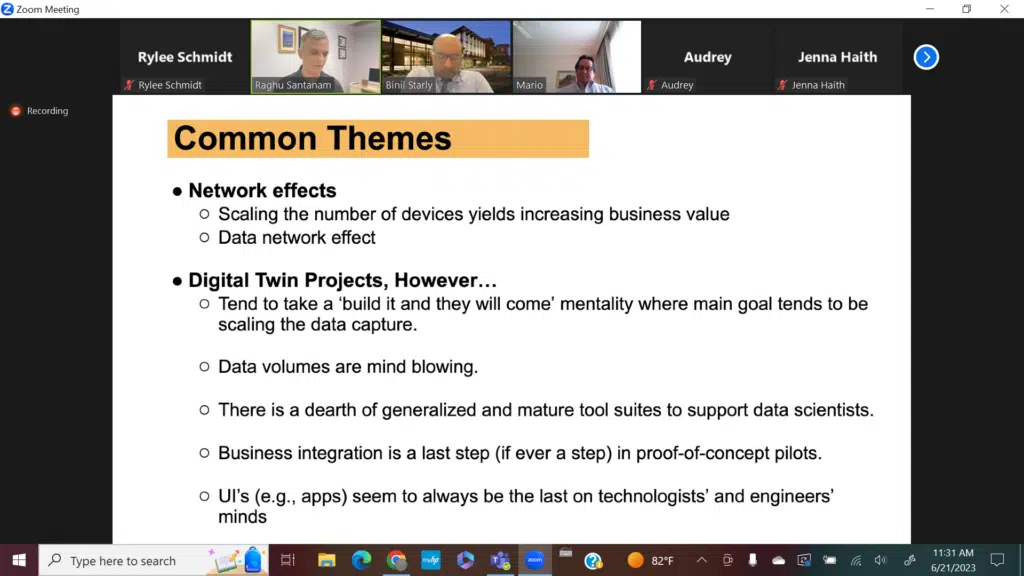18 Jul Workforce Wednesday 2023: Digital Twin & Industrial Internet of Things: Technical & Business Discussion
Digital Twin & Industrial Internet of Things: Technical & Business Discussion
While there is a lot of talk about Industry 4.0 and the Internet of Things (IoT) many organizations are not yet ready for its implementation. Smart manufacturing remains out of reach with many still relying on paper processes such as Excel spreadsheets to crunch data. But these human processes always produce a lag and make it difficult to merge data across systems. The latency, or time it takes for data to emerge in a dashboard, makes it difficult to use real-time data for decision making.

Plus, how do you intelligently translate the mass of data received into assets that can be used across the organization to tell a story beyond developing reports? To do this properly, it’s important to have a way to interpret the data received and to make actionable decisions in real time.
Next Industrial Revolution
Industry 4.0 enables this through the use of digital twins and IoT project workstreams. A digital twin creates an environment through a virtual representation of an object or system, offering a two-way flow of information that is synchronized at a specific frequency/fidelity. This enables the ability to study more issues from more vantage points than through simulation. Such a vantage point can assist R&D and improve efficiency and product end-of-life using intelligence to interact with the environment.

Information from the digital twin is assisted through the use of simulation, reasoning and machine learning to create a near real-time view of where products are in the system. This will not be a perfect representation, but it will provide information on what is essential for monitoring. The fidelity, or exact correspondence with a fact or given quality, will depend on the needs of the business. A true digital factory requires an interconnected network of intelligent models that represent every critical physical asset in the physical factory along with its extended supply chain in both static and dynamic states.
Artificial intelligence (AI)
The use of a digital twin also opens the way for incorporating artificial intelligence (AI). Sensors enabled by machine learning and other aspects of AI provide data about the performance of the object. Data received from a sensor is then relayed to a processing system and applied to a digital copy. Using this data, anyone can see what’s happening in real-time from different viewpoints.

These data points can also include the capture of sound and video feed and energy consumption within a space. In the bakery environment, this could include receiving information from the processing line such as weight control and moisture content as well as providing reasons for line shutdowns. The recording of this information may or may not rely on a human element.
Championing Digital
While data collection can be incredibly helpful, there needs to be a plan in place regarding how the organization will handle the volume of data as well as where the data will be integrated. Business integration is often left as the last step in proof-of-concept pilots. Instead, think about business integration first. Determine how the information will be used before moving on to the manufacturing process, technology and user interface.

Because digital twin and IoT is newer technology, adoption will often be determined by whether or not there is a champion at the top in the organization. This individual needs to understands the benefit as well as to encourage support throughout the organization. The more champions, the more sustainable the technology will be. There also must be trained operators at a higher level. Because the sector does not yet have a strong focus on digital information, this is a skill set that will likely need to be developed within the industry.
More Information:
National Strategy for Advance Manufacturing Report
Manufacturing USA Institute Network
Arizona State University Internet of Things Collaboratory
Presenters:
Raghu Santanam, Senior Associate Dean and Professor, W.P. Carey Dean’s Office, Arizona State University and Binil Starly, Director and Professor, School of Manufacturing Systems and Networks, Arizona State University
Sponsor:
Lallemand Baking





No Comments